Initially, the quinarius was struck for a few years, along with the silver sestertius, following the introduction of the denarius in 211 BC. At this time the quinarius was valued at 5 asses.
The coin was reintroduced in 101 BC as a replacement for the victoriatus, this time valued at 8 asses due to retariffing of the denarius to 16 asses in 118 BC.
For a few years following its reintroduction, large quantities of quinarii were produced, mostly for circulation in Gaul. The coin was produced sporadically until the 3rd century. It was also occasionally struck in gold.
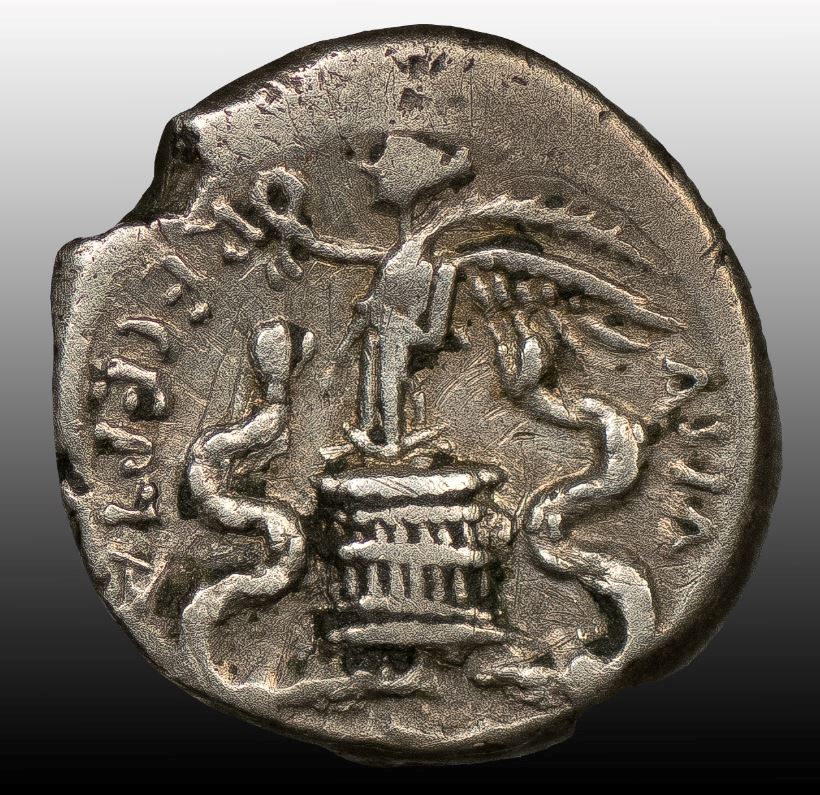
.jpg)
Reverse:
Die Orientation: -
Weight: 1.9 g
(2).jpg)
Reverse: LAETITIA AVG, galley right, with mast and six oars; QC in exergue
Die Orientation: 6 H
Weight: 2.7 g
.jpg)
Reverse: VIRTVS AVG, Galley rowing left; QC mint mark in exergue
Die Orientation: 12 H
Weight: 2.23 g
.jpg)
Reverse: VIRTVS AVG, galley left, with mast and five oars; QL in exergue
Die Orientation: 6 H
Weight: 2.58 g
Roma Numismatics Auction XIX; Lot 910, Ex. Frank Reinhardt Collection; Bt. Marc Walter Ancient Coins, 2017; Ex. H.D. Rauch Auction 102 (2016); Lot 513, Ex. Bankhaus Aufhäuser Auktion 11 (1995); Lot 420
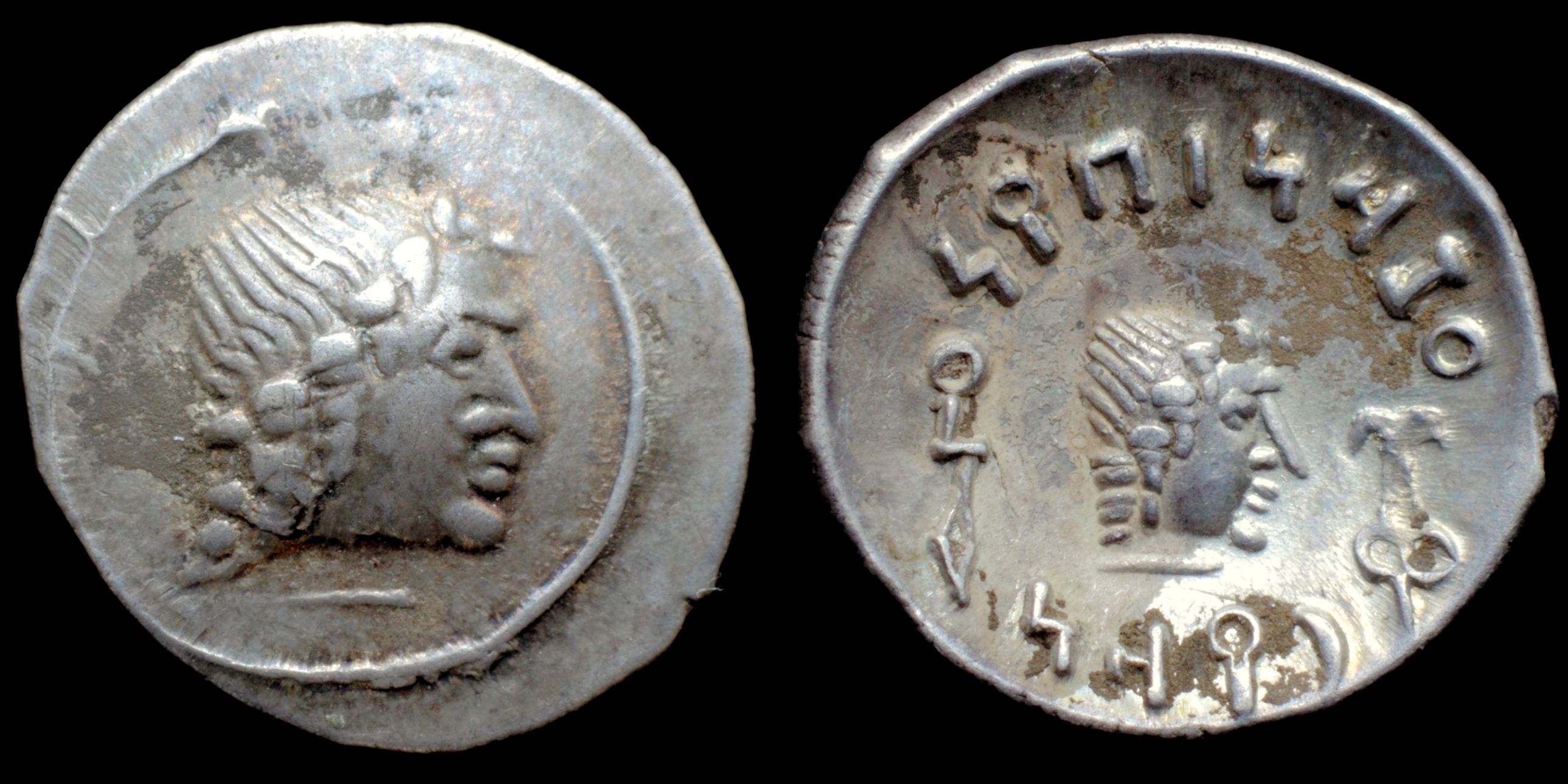
Reverse: 'MDNIBYNI around, RYDN in exergue, small head right; sceptre symbol before
Die Orientation: -
Weight: 1.2 g
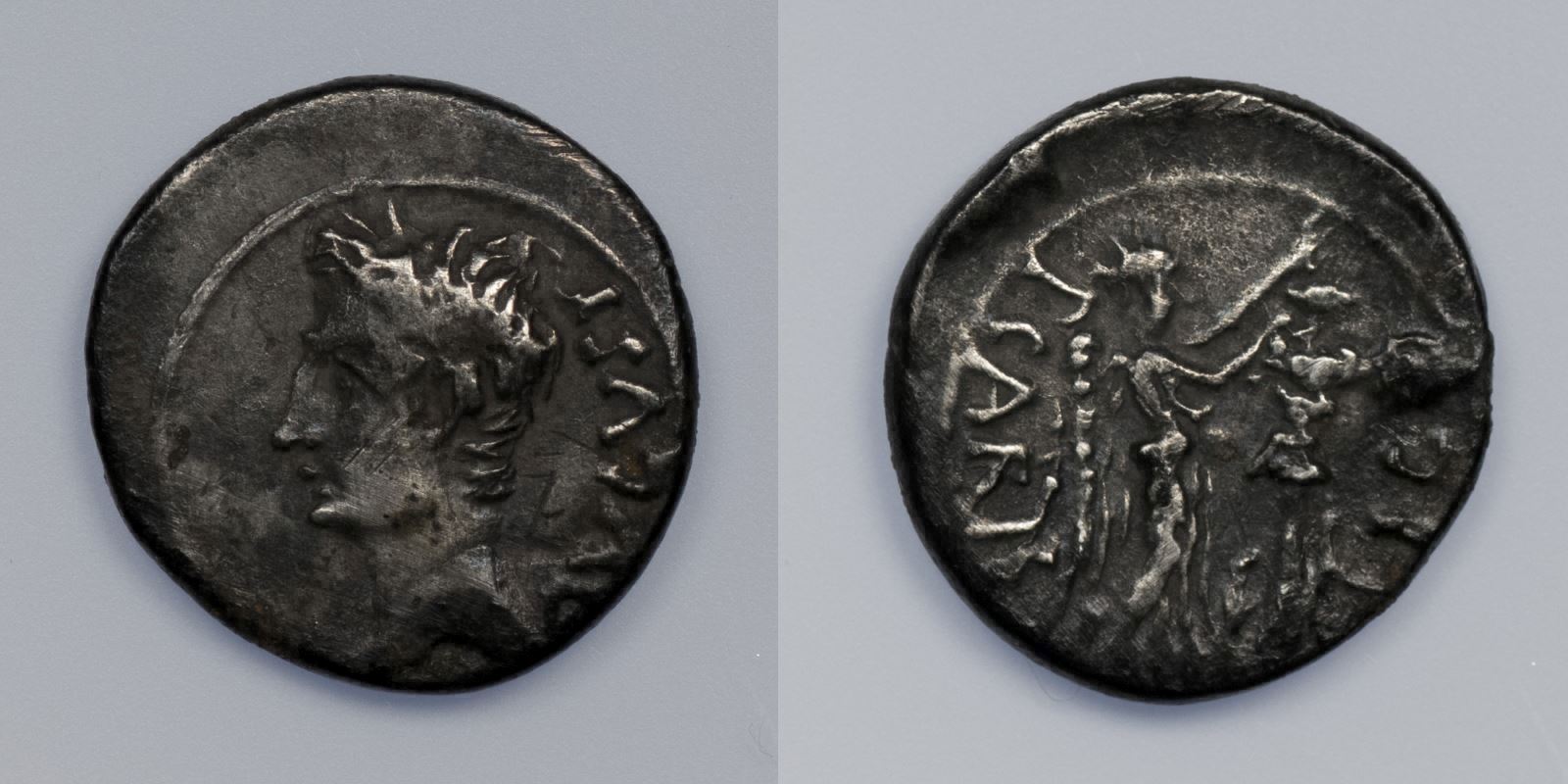
Reverse: P CARISI LEG, Victory standing facing right, crowning trophy of captured arms, dagger and curved sword at base
Die Orientation: 12 H
Weight: 1.79 g
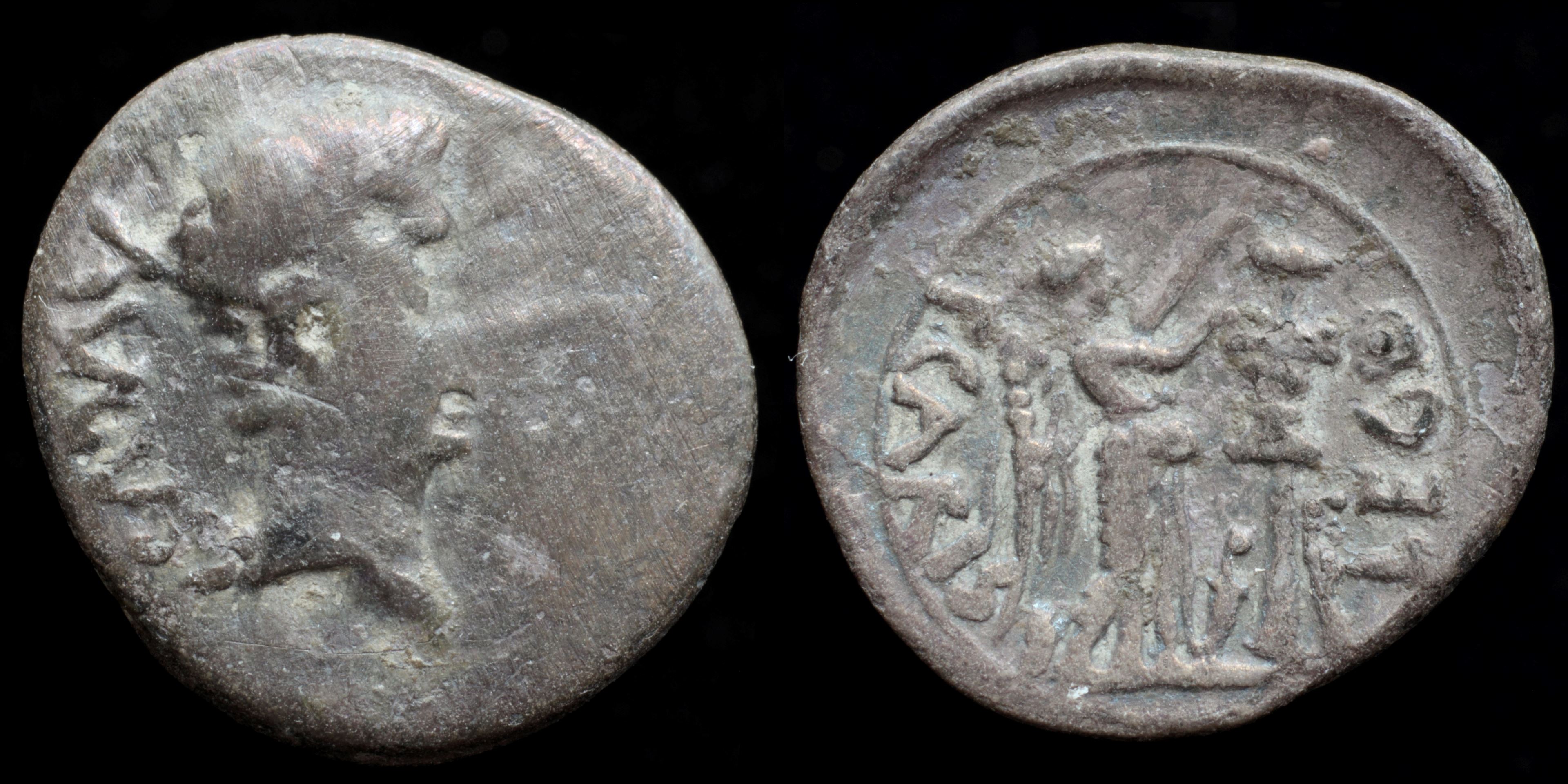
Reverse: Victory standing right, placing wreath on a trophy consisting of helmet and cuirass; dagger and sword hilt at base of trophy; P CARIS_I__LEG
Die Orientation: -
Weight: 1.56 g
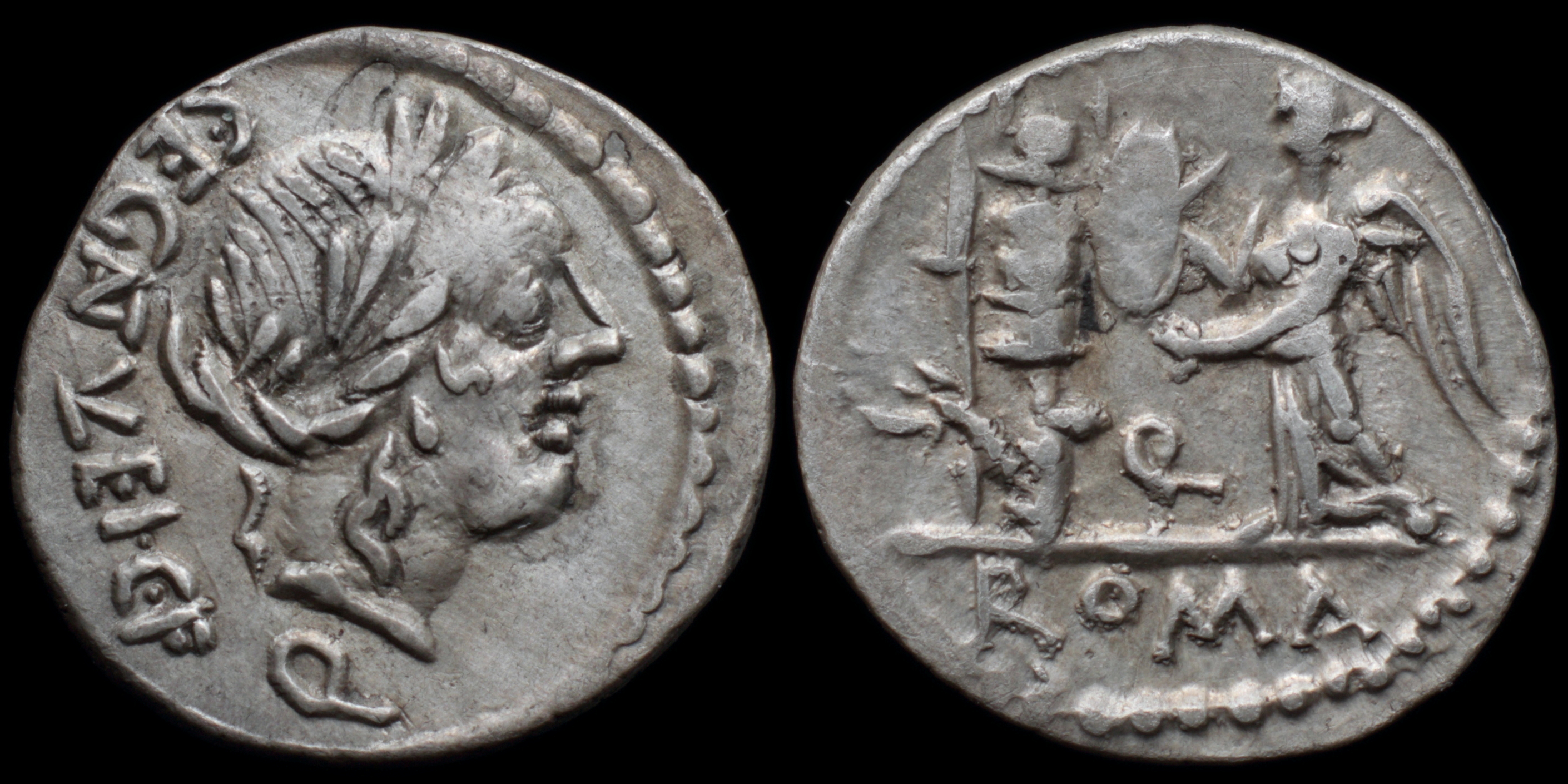
Reverse: Victory left insribing shield on trophy topped with a helmet ornamented with bull horns; carnyx at base of trophy; Q / ROMA
Die Orientation: -
Weight: 1.8 g
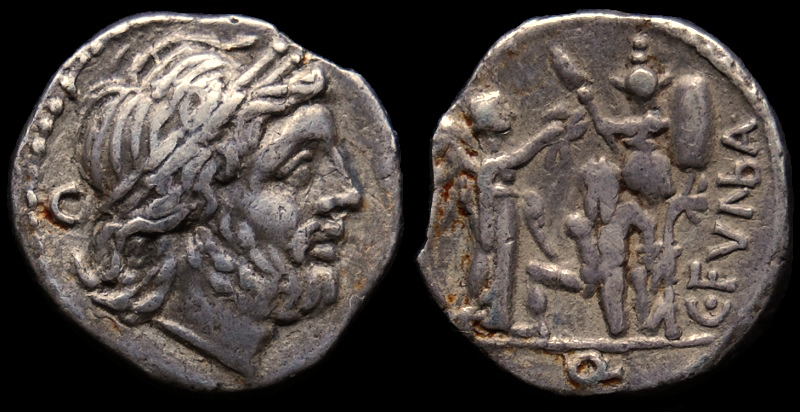
Reverse: Victory standing right, crowning trophy, beside which stands carnyx; before which, Gallic captive kneeling left; Q (mark of value) in exergue.
Die Orientation: -
Weight: 1.76 g
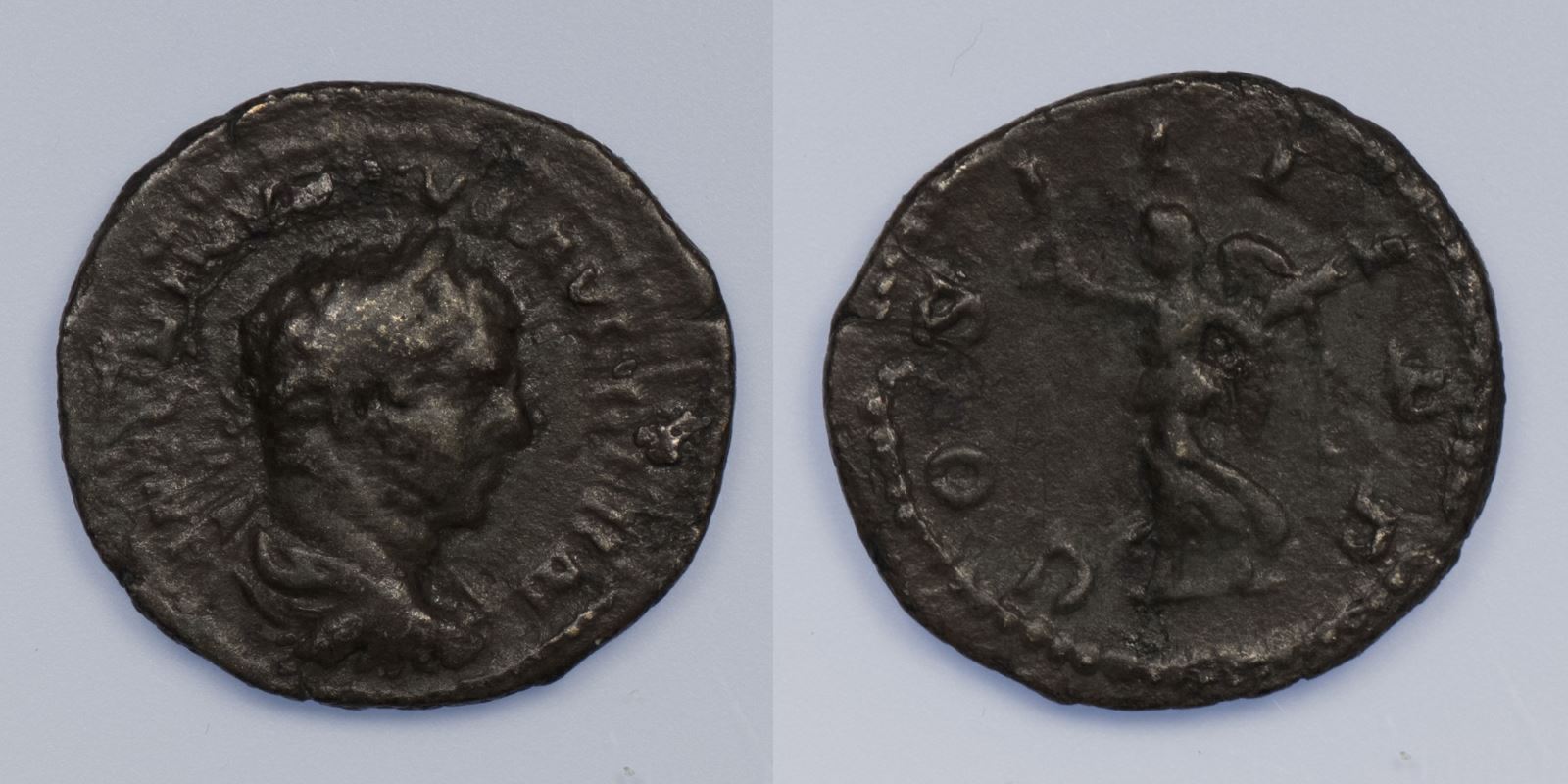
Reverse: COS IIII P P, Victory advancing left, holding wreath and palm
Die Orientation: 12 H
Weight: 1.27 g
(1).jpg)
Reverse: Victory standing right, crowning trophy; CN LENT in exergue (NT in monogram)
Die Orientation: 2 H
Weight: 1.85 g
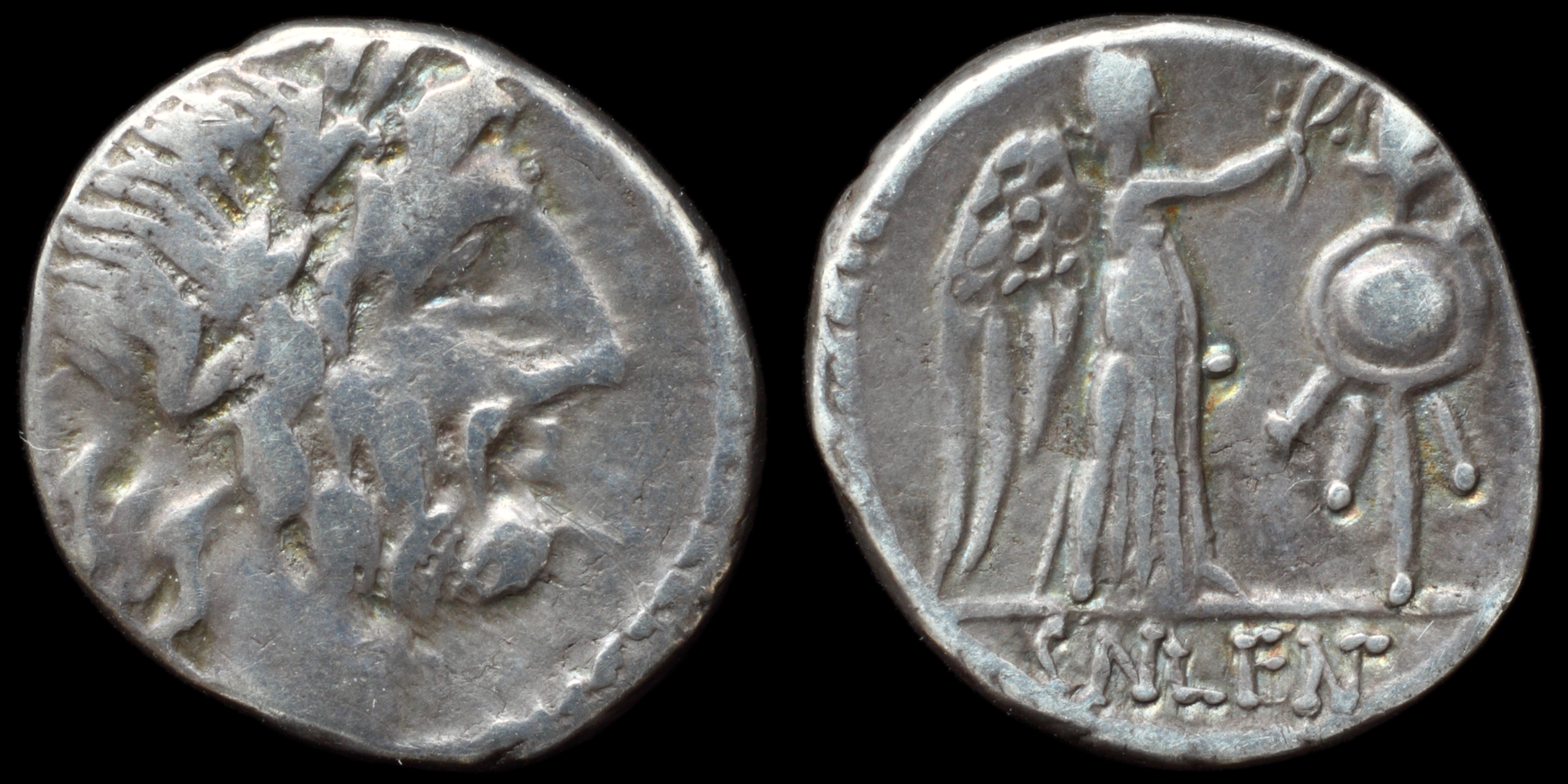
Reverse: Victory standing right, crowning trophy with wreath; CN LE(NT)
Die Orientation: -
Weight: 1.9 g
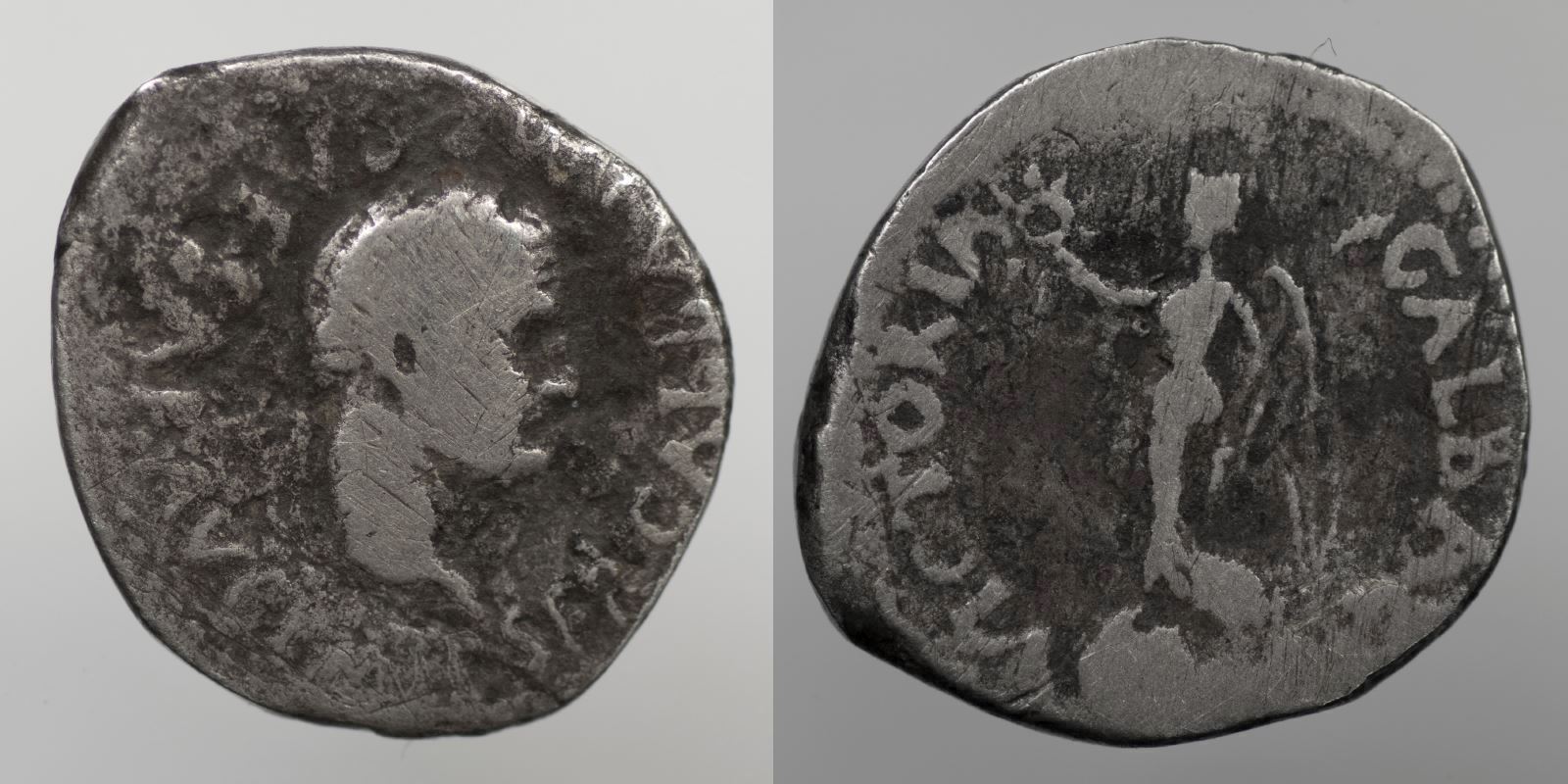
Reverse: VICTORIA GALBAE AVG, Victory wearing drapery, standing facing left on top of globe, holding wreath and palm
Die Orientation: 6 H
Weight: 1.62 g

Reverse: Victory advancing right, holding wreath and palm-branch, L PI - SO across fields, FRVGI in exergue.
Die Orientation: -
Weight: 2.16 g
Provenance: Naville Numismatics, Auction 42 (22 July 2018), lot 422. Ex Sternberg Auction 18 (20 November 1986), lot 323.
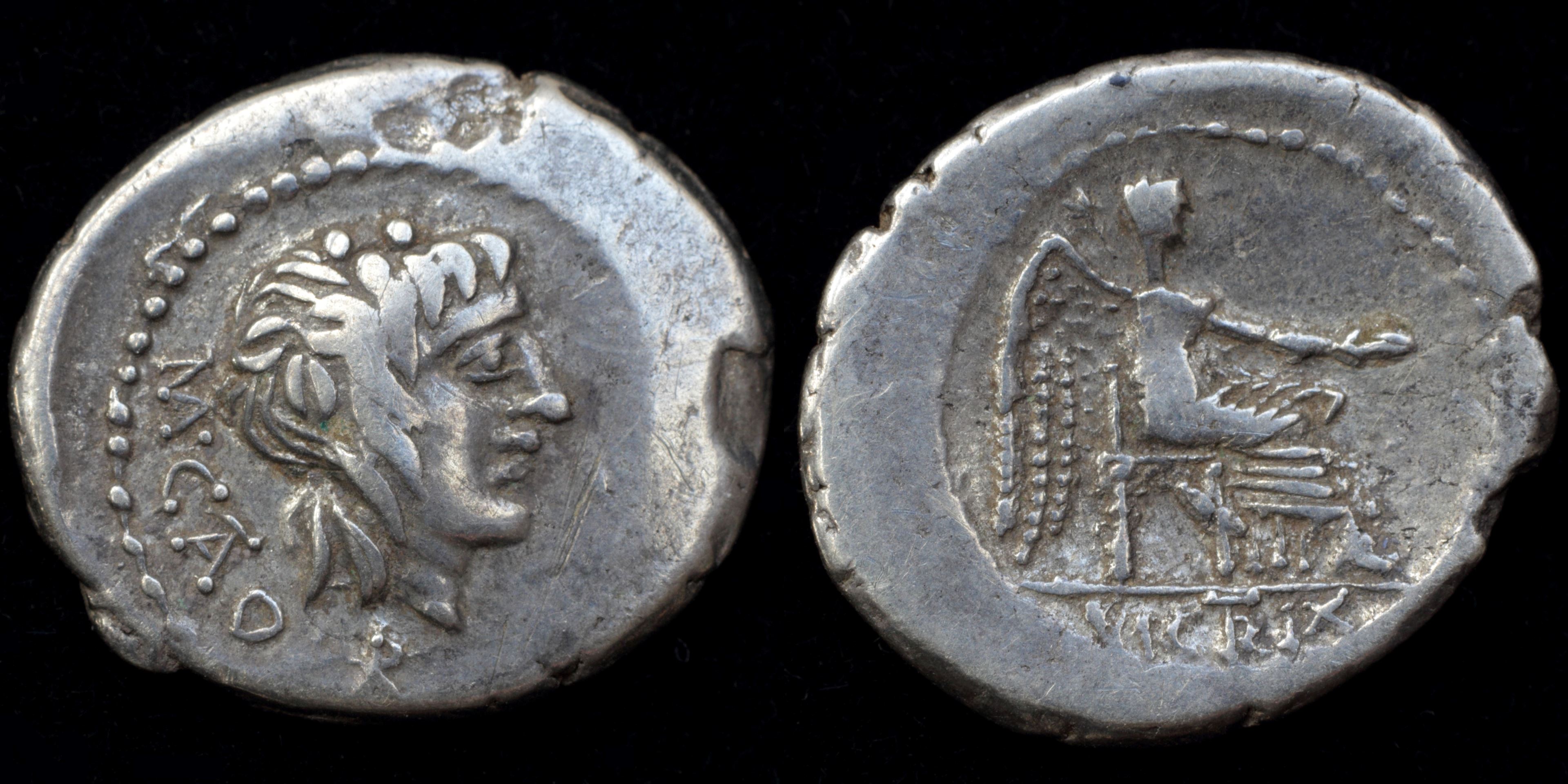
Reverse: Victory seated right, holding patera and palm VIC(TR)IX
Die Orientation: -
Weight: 2 g
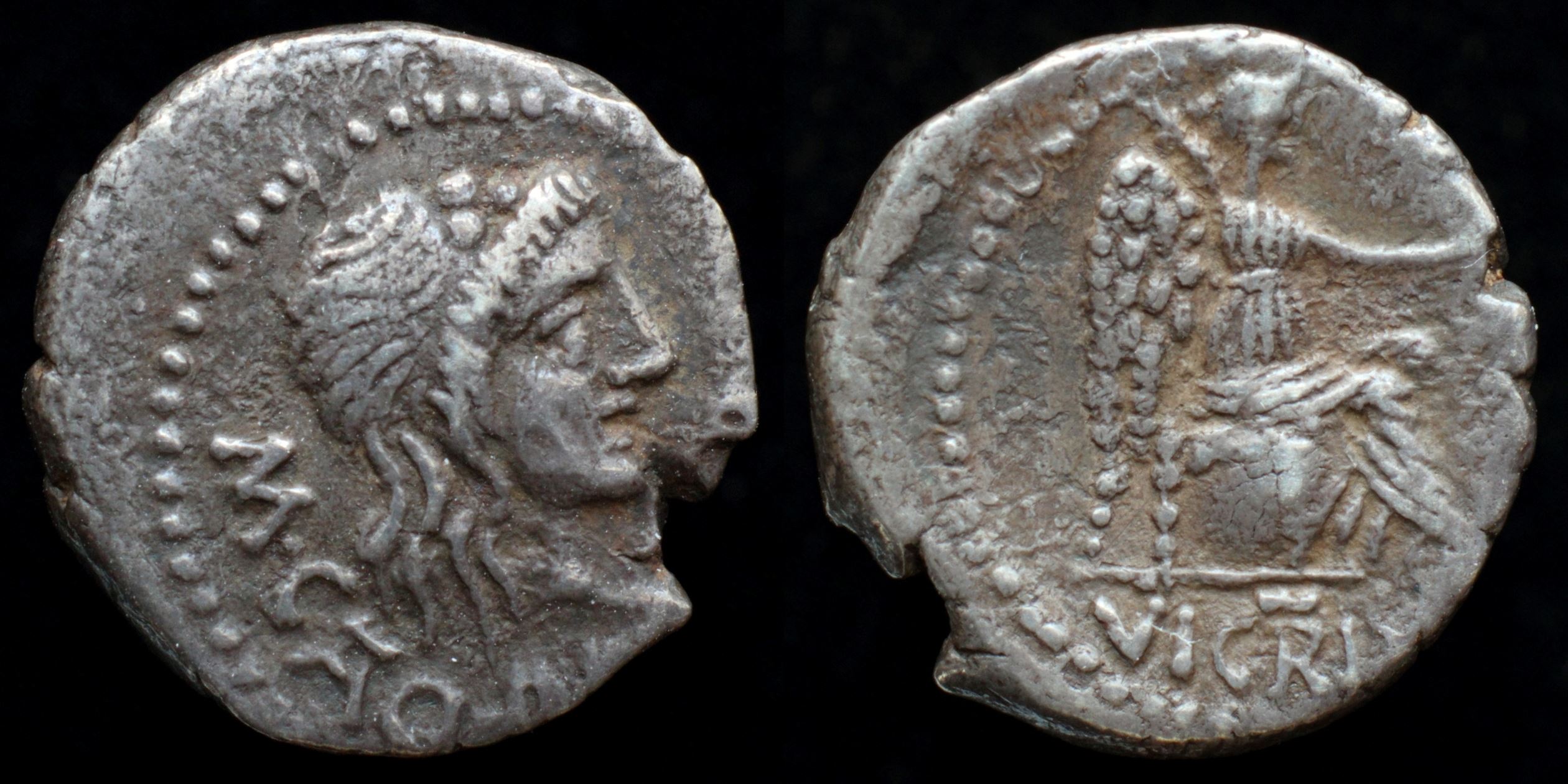
Reverse: seated Victory right holding patera and palm; VIC(TR)IX
Die Orientation: -
Weight: 1.8 g
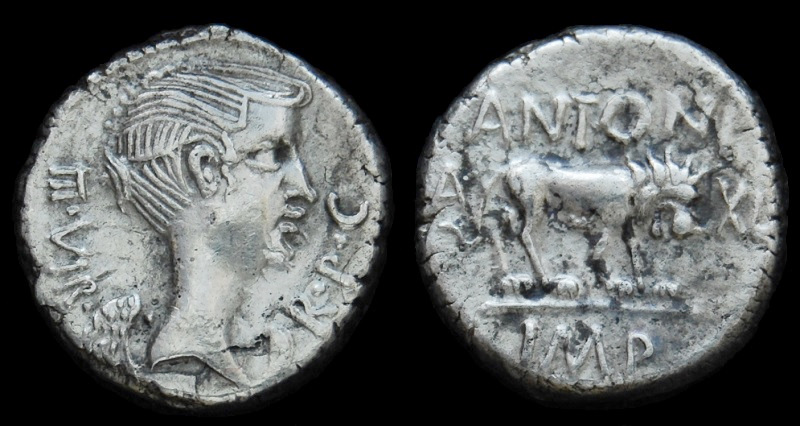
Reverse: Lion walking right; ANTONI above; A - XLI ( = 41, Antony’s age at time of issue) across field; IMP in exergue.
Die Orientation: -
Weight: 1.88 g
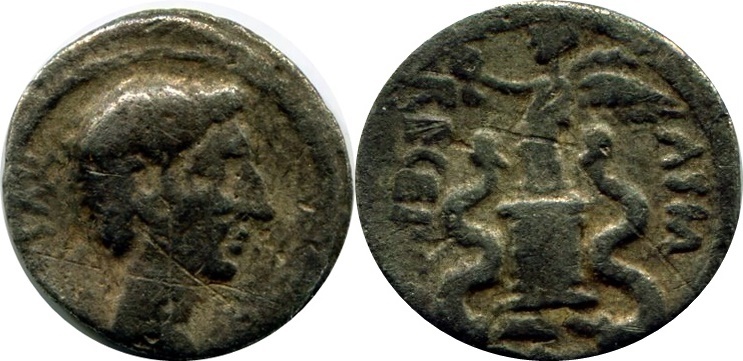
Reverse: ASIA RECEPTA – Victory draped, standing looking left, holding wreath in right hand. On cista mystica between two snakes
Die Orientation: 0 H
Weight: 1.45 g
This issue was struck to commemorate that the province of Asia had accepted Octavian's victory over Marcus Antonius in 30 BC. But where Aegyptus was a client kingdom, and therefore could be captured per se, Asia was a veteran province already, so the regular CAPTA reverse was probably deemed unsuitable, and the RECEPTA reverse was used instead.
.png)
Reverse: ASIA RECEPTA, Victory standing facing left, holding wreath and palm, on top of cista mystica, serpents at left and right
Die Orientation: 1 H
Weight: 1.66 g
RSC has this to say:
"The subjection of the Province of Asia occurred in B.C. 30."
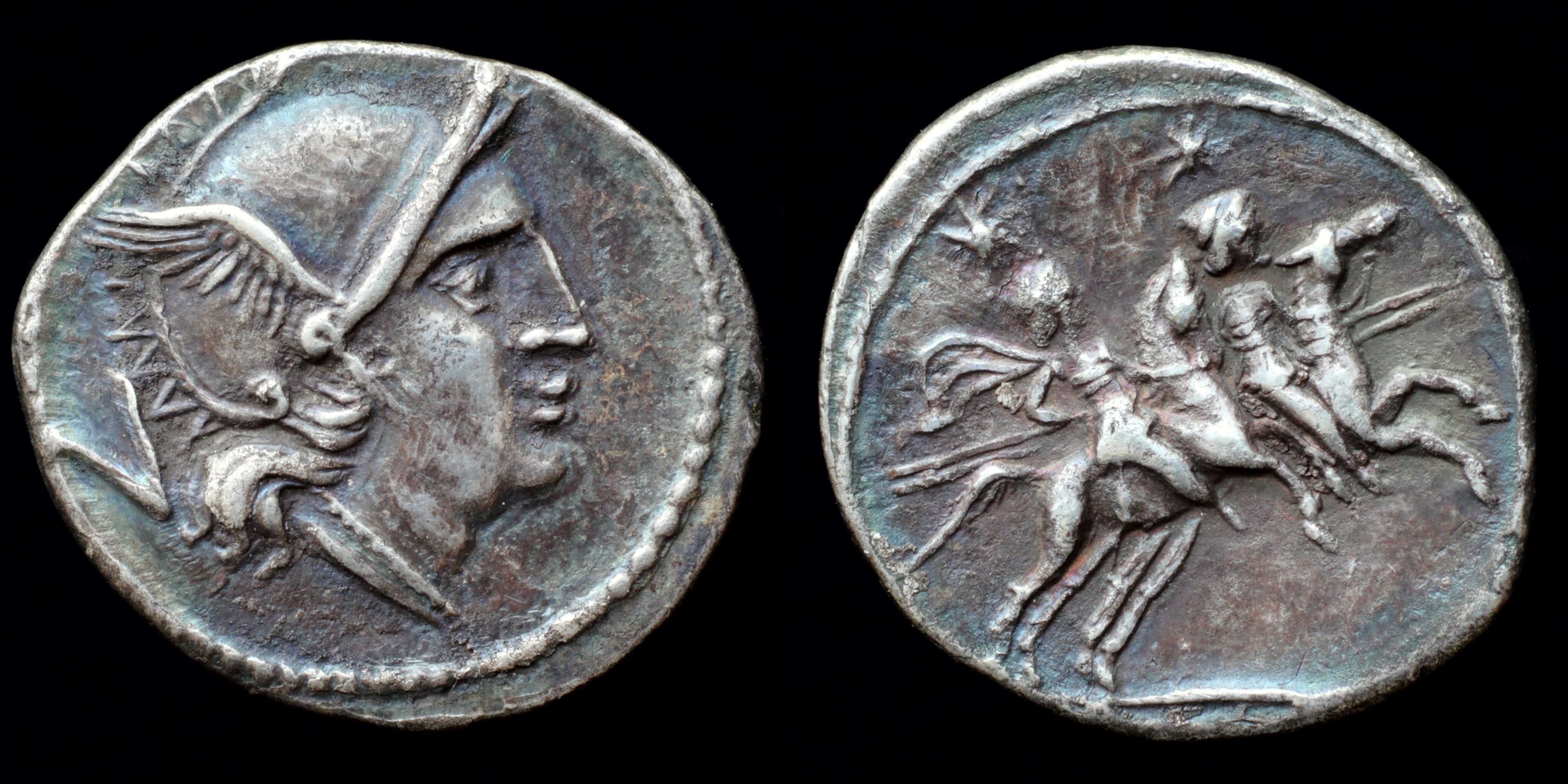
Reverse: Dioscuri on horses riding right, holding spear and reins, stars over pilei; ROMA
Die Orientation: -
Weight: 2.1 g
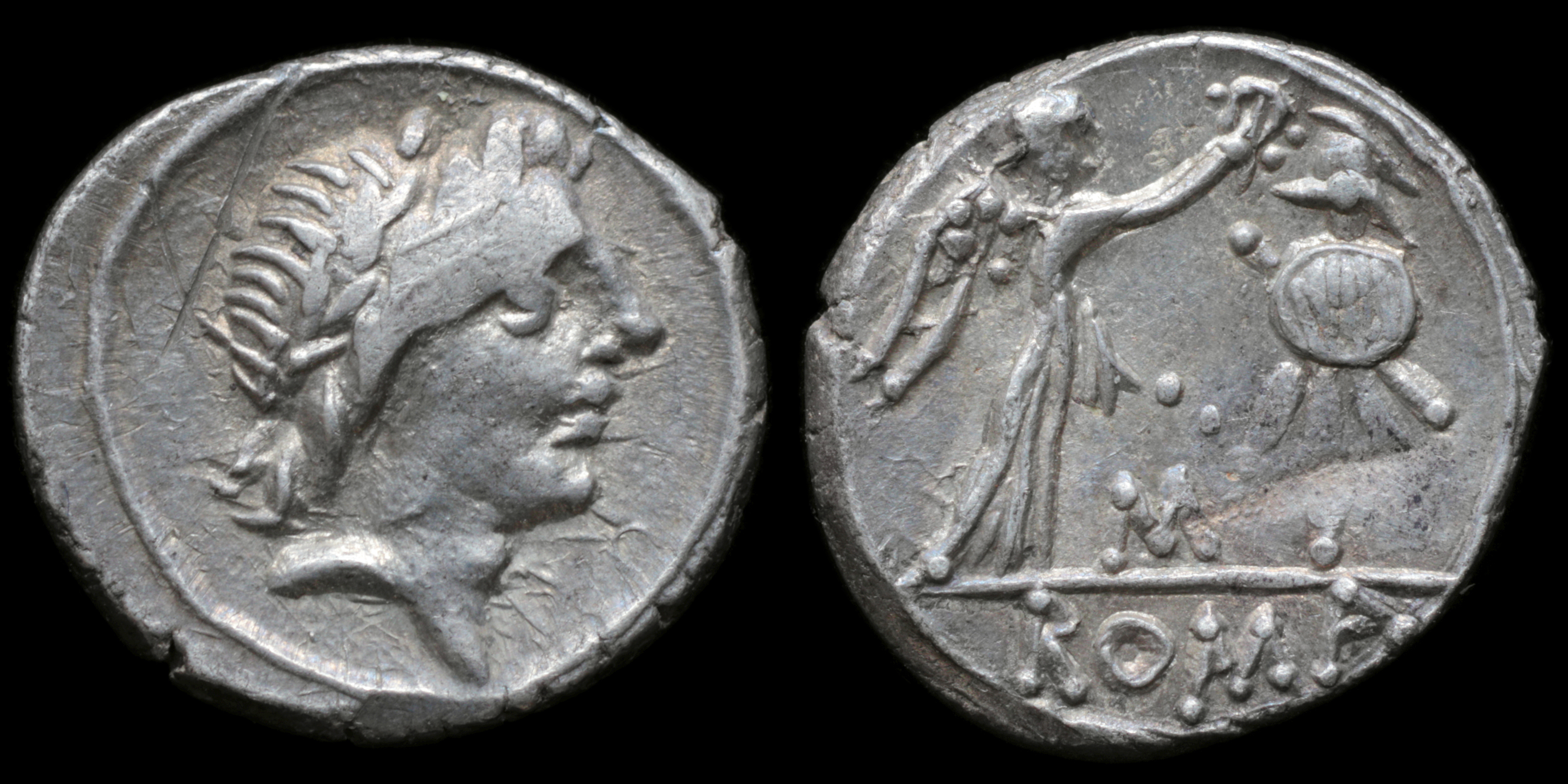
Reverse: Victory standing right crowning trophy with wreath; M / ROMA
Die Orientation: -
Weight: 1.9 g
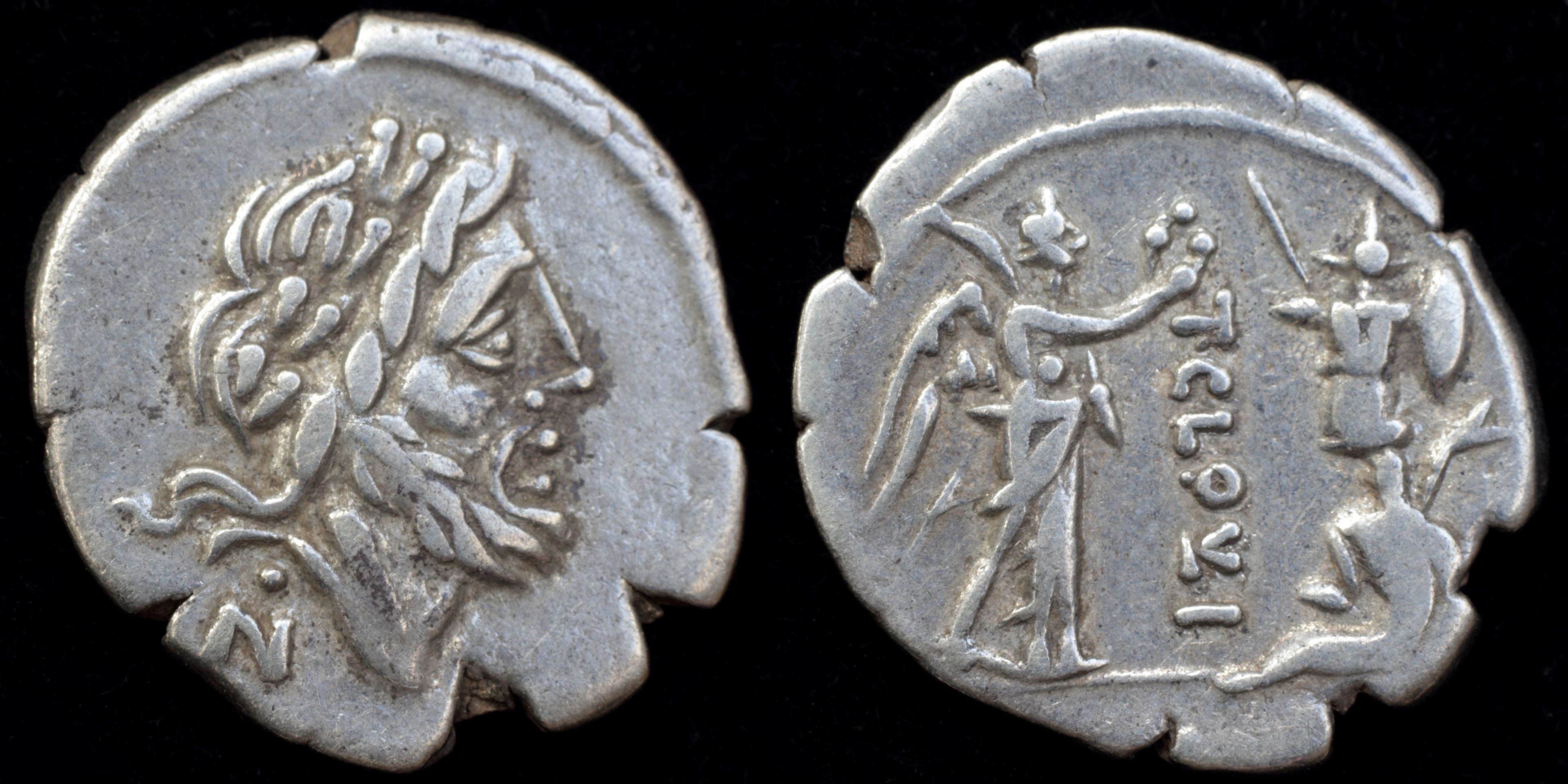
Reverse: Victory standing right, holding wreath and palm. Trophy with Gallic captive seated left, T·CLO(VL)I, Q
Die Orientation: -
Weight: 1.9 g
T. Cloulius, supporter of Gaius Marius, struck this issue as questor. This coin commemorates Marius' victory over Teutones in the battle of Aquae Sextiae 102 BC and over Cimbri one year later.
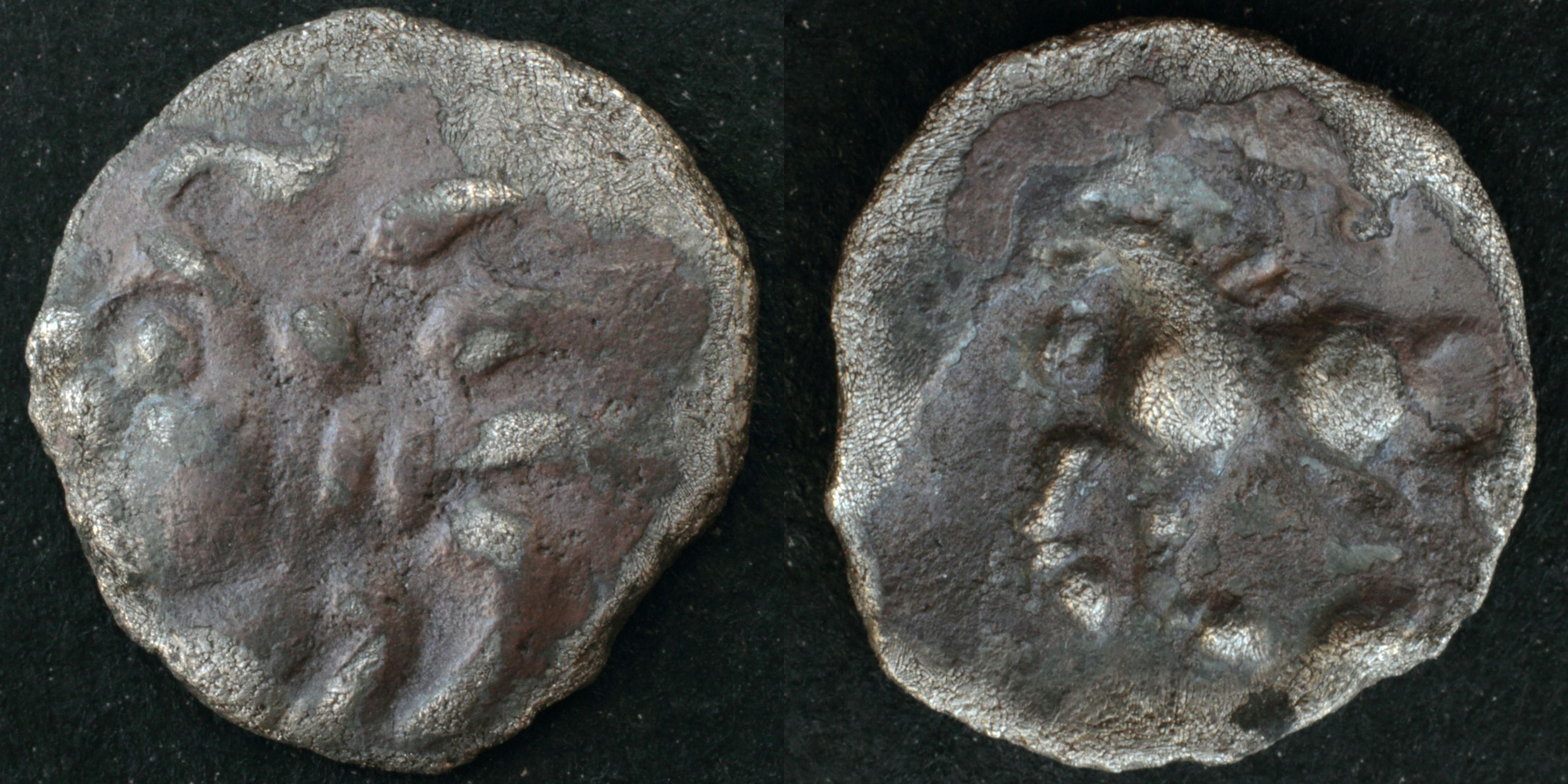
Reverse: horse left; pellet above
Die Orientation: -
Weight: 1.74 g
Vindelici lived in the area of today's Switzerland, southern Germany and western Austria.
